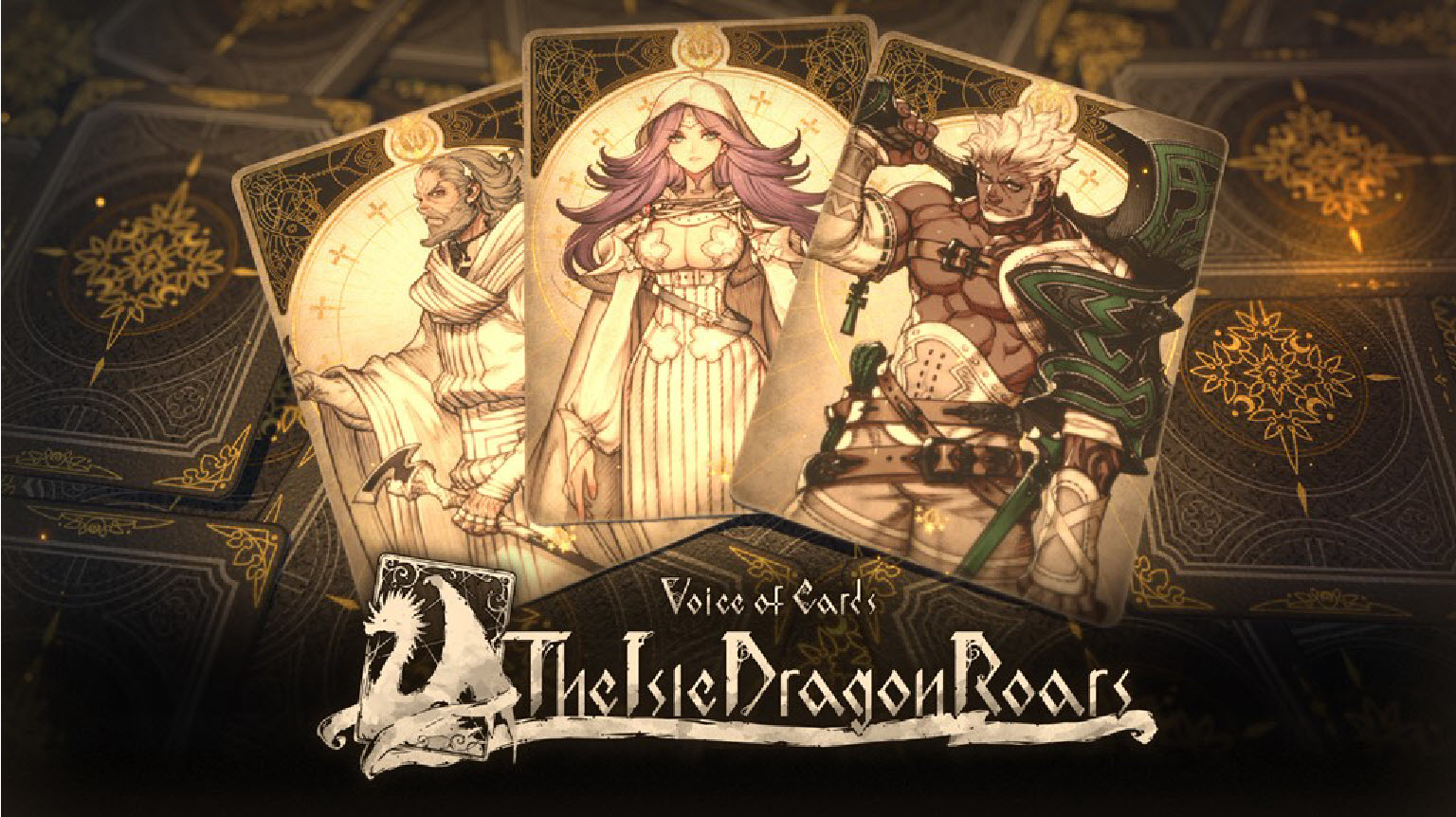Voice of Cards: The Isle Dragon Roars
Developer: Square-Enix/Alim
Publisher: Square-Enix
Platforms: PlayStation 4 (Reviewed), Switch, PC
Release Date: 28 October 2021
Price: US$29.99 – Available Here
Overview
Voice of Cards: The Isle Dragon Roars is the newest game from the creative mind of Yoko Taro. One of the creators of the Drakengard and Nier series, Taro gained a small cult following throughout the years. Taro’s games feature themes of existentialism, and they also touch on some “taboo” subjects such as female sexuality; including but not limited to abortion, gender identity, and more. After the success achieved by Nier Automata, Taro gained immense popularity, especially in the West. Voice of Cards isn’t part of the Nier canon and was originally pitched by Taro as a social mobile game. With the intervention of producer Yosuke Saito, development shifted to consoles and PC as a small-scale project. However, what Voice of Cards lacks in “high production values” is compensated by the artistry and innovation in regards to its presentation.
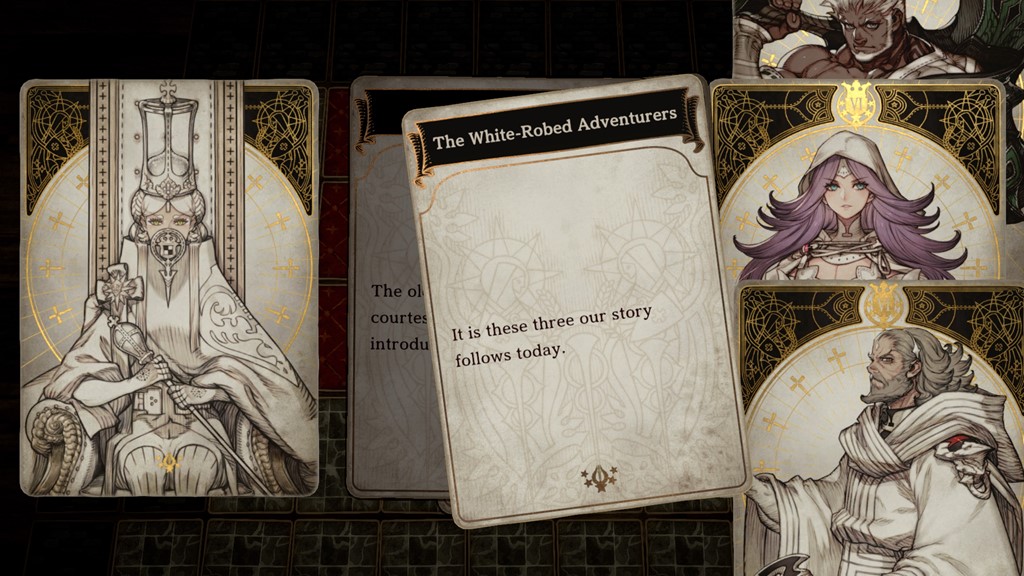
Story
Voice of Cards tells the tale of a dragon that, after having been defeated once, returns to once more threaten the peace now enjoyed by the people. A hefty reward is offered by the queen to those who are able to slay the dragon. As Ash, the money-hungry, “self-proclaimed hero” along with his monster companion Mar, the player must overcome a series of quests and enlist the help of people who have their own personal reasons for joining Ash; some related to the dragon, some not so much. Other parties are also in search of the dragon. Is the dragon really the cause of all the world’s problems? None of that matters to Ash, or so it appears. And so, Ash departs on his quest to get rich.
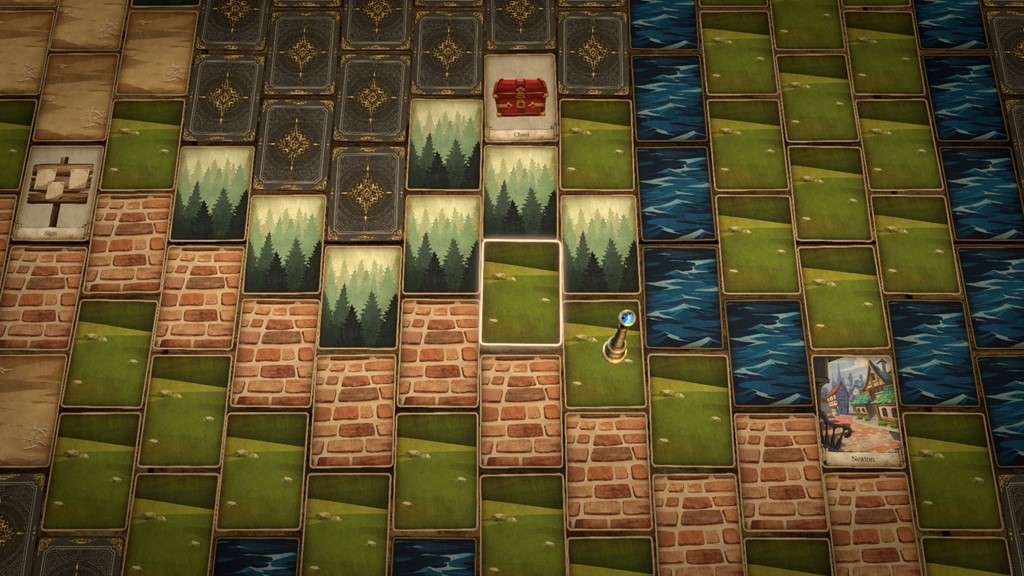
As with everything in the game, the story is told as if you were in a session of tabletop Dungeons and Dragons with a snarky “gamemaster” narrating everything. The gamemaster’s words are absolute, which basically renders most of your story-related choices inconsequential. This is standard JRPG story-telling and allows the game to flow in a very straightforward and easy-going way.
Gameplay
Think of Voice of Cards as a traditional, old-school JRPG. Something like the Dragon Quest titles of old in regards to its progression and overall presentation. The game is laid out exactly like a tabletop game with the player controlling a piece that can be moved along the card-filled board. The towns, NPCs, etc. are all represented as up-sided cards where your piece can land, thus triggering a dialogue or event. While in the field, most of its terrain is covered in down-sided cards which are flipped once your piece is right next to or adjacent to a card; this manner of exploration is interesting because it encourages the player to keep moving their piece to reveal what lies beneath the next card. It could be just another piece of terrain, a chest, an NPC, and so on. As your piece is placed upon certain tiles, random events might trigger that prompts the player to choose an option or roll a dice to see what the outcome will be.
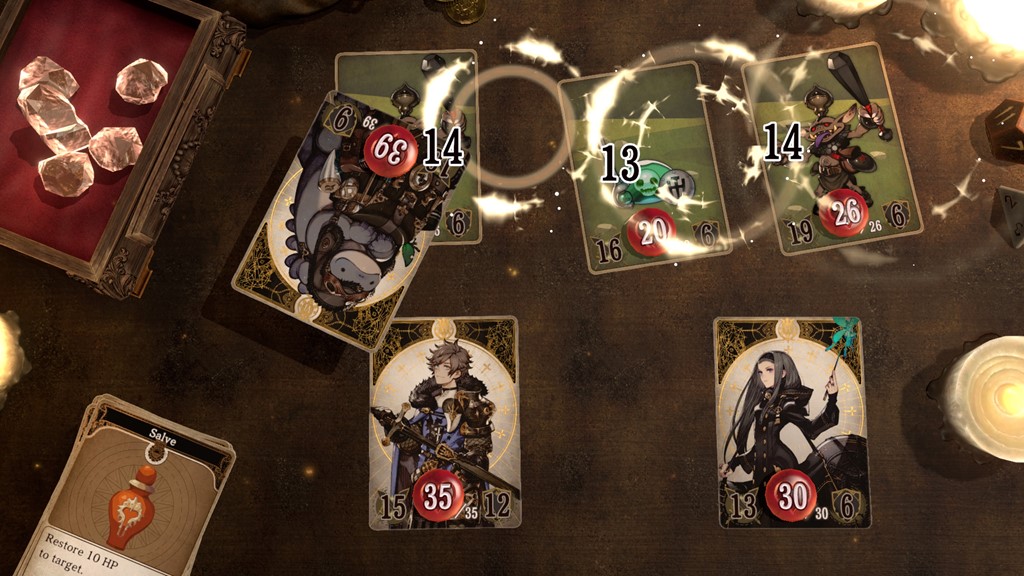
Battles occur randomly as you move your piece through the field or dungeons. Upon encountering an enemy, the game will switch to a smaller table that is used exclusively for dealing with battles. The battles are turn-based with each character acting according to their agility status. Instead of MP, the game uses a system in which gems are accumulated each turn. Every turn, your party will receive one gem regardless of whether you used a simple action such as a normal attack or if you passed a character’s turn. Stronger and effect-inflicting attacks or actions will require the use of gems. Although the battles flow well and relatively fast, they are the weakest point of the game. The battles provide no challenge whatsoever: you can just mash buttons if you want while in battle without fear of enemies killing even one of your party members. Just have the latest equipment that you can buy in towns and you’re set. The battles continue in this braindead pattern throughout most of the game. The difficulty spikes a bit towards the end, but by then, the battles will have mostly outstayed their welcome. I can come up with only one reason for the game designers to have handled the battles like this. They did it for the sake of accessibility; you don’t even need to read most of the text since the gamemaster will do it for you. There’s no difficulty selector, and the game can even be played with one hand most of the time, although not for the kind of accessibility some of you might think.
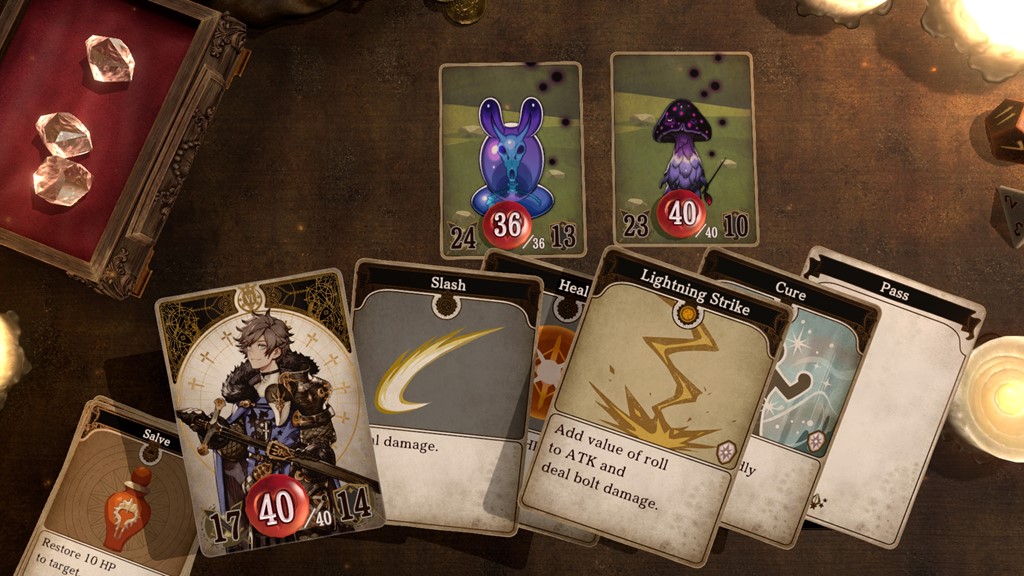
The lack of challenge can be a huge detractor to the game’s overall enjoyment, especially for some more old-school players. Even then, there’s a lot to love in Voice of Cards. Its presentation keeps things fresh. The story at first is your “tired and true” trope about a group of characters who want to save the world, but let’s remind ourselves that this is still a game with heavy influence from Yoko Taro and his team. There is no shortage of events and secrets to discover which will pique a player’s curiosity. There’s even a game of cards… inside a game of cards; it serves as a nice distraction and can even be played with three other players; provided you are in the same room since there’s no online multiplayer to speak of.
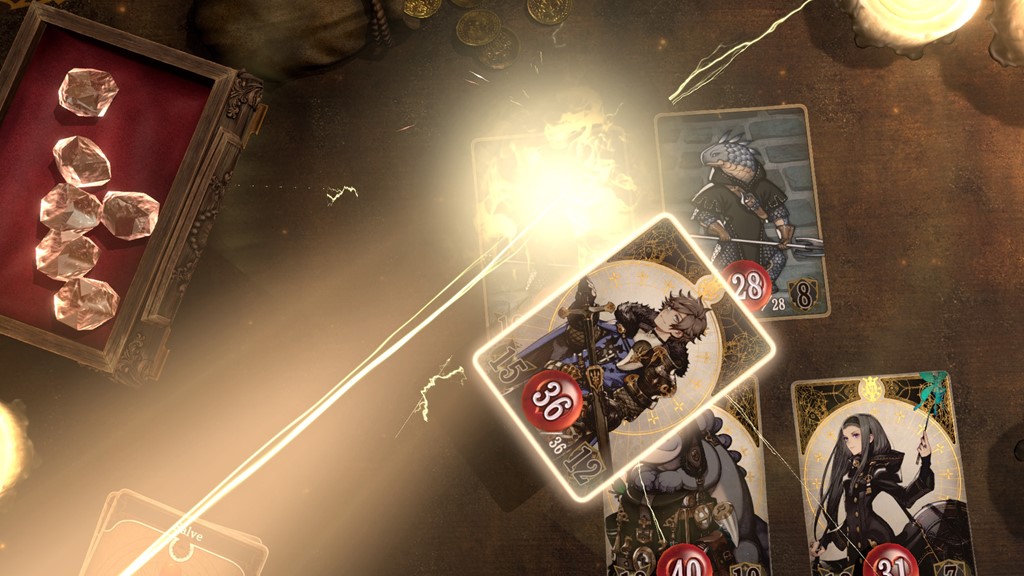
Visuals
Browsing through the images in this review is basically most of what you’re going to see in the game. The graphics are super simple but charming. The card artwork might not resonate with everyone because of their anime style. I’d say that the card’s artworks are very pleasing to my eyes. The navigable field leaves a lot to the imagination, and to me, this is on purpose: every time you enter a new city or dungeon you’ll have only tiles with the occasional fog or some other effect. The same NPC and shop cards are reused a lot of the time. It’s with the help of the gamemaster who will narrate with precision what exactly stands before you and your own imagination that you’ll have a clear idea of where you are and the type of situation you find yourself in.
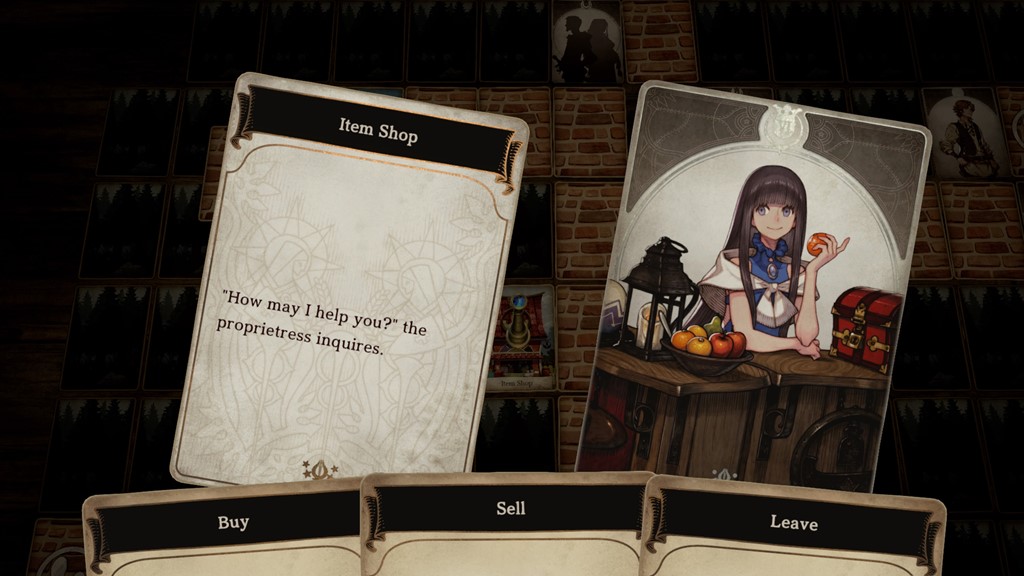
Audio
Keiichi Okabe returns once again, not as the main composer, but as a contributor of sorts. Nevertheless, the music composition in Voice of Cards is beautiful: the melodies take inspiration from Celtic themes and traditions. The only downside about the music is the lack of variety regarding the number of tracks. The audio design is excellent: the sounds of the cards flipping, the dice rolling against the wooden table and whatnot are very relaxing and will remind you of those old GURPS sessions or, at least, make you imagine how it is or used to be.
Overall
Voice of Cards: The Isle Dragon Roars promised a true JRPG adventure with an engaging story told only with a table, cards, and some dice. Featuring big names from the JRPG scene, Voice of Cards delivers on its ideas and story but sets aside one important aspect of any JRPG: its combat is borderline frustrating. In fact, this might drive away many players who will dislike the game entirely because of the combat. I won’t say that the lack of challenge and diversity to the combat are minor setbacks; they take a lot out of what was primed to be one of the best RPG experiences this year. That said, there’s enough quality content in Voice of Cards that will make it worth your while, especially if you’re a fan of a good old tabletop RPG session.
Capsule Computers review guidelines can be found here.


